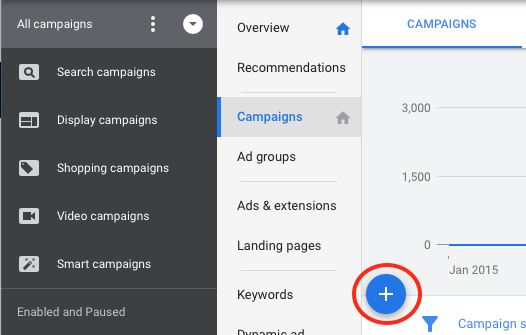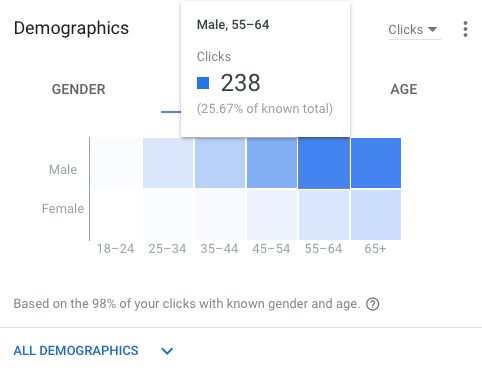7 steps to setting up GoogleAds
This article is about how we can support you with GoogleAds.
If you aren't using GoogleAds, you should know why not.
You can learn about Customers and Competitors from using Ads:
- What your customers are searching for
- How important particular search terms are to your customers
- What your competitors are bidding on, which sites you lose out to
- What demographics you are attracting
- When people are searching for your products/services
You can also drive more sales from using GoogleAds:
- Target specific pages that you want to drive traffic to
- Build specific campaigns, adverts and display banners
- Configure key words, and let Google's learning algorithm to choose the best ads for you to run
When to / When not to use GoogleAds
However GoogleAds aren't always right for everyone, and not all products need GoogleAds. GoogleAds aren't right for you if:
- Your customers already know what they are searching for, without adverts
- Your business is predominantly word of mouth, and you aren't looking to increase traffic or sales online
- You are happy with the amount of business your website is generating.
- You already have a very robust, backed-up idea of what your customers are interested in
GoogleAds could be the right thing for you if you:
- Want to increase sales online
- Want to launch a product or service
- Want to grow awareness and generate new leads
- Want to understand your customers better
How can I get started?
1) Set goals.
You'll want to start by clearly defining what you are trying to achieve. More website traffic? More sales? More phone calls? More contact forms? Its worth spending some time looking at your current sales, your new products, where you feel the potential is and what you want to achieve with the ad campaigns.
2) Add a campaign.
Campaigns are like categories for adverts. If you were a department store, you'd have a campaign for electrical appliances, and a separate campaign for interior decor, and another for carpets and upholstery. These are all within your store but have very different types of product by keyword. Setting up a new campaign is easy - simply click "Campaigns" and the Plus Symbol, or "Overview" -> New Campaign.


3) Configure the Campaign
This will define:
- Type:
Search - Text adverts based off the search bar
Display - Image and cross platform adverts such as those you see while browsing other sites
Shopping - Within the "Shopping tab" of Google
Video - Youtube and other platforms will display this ad
- Network:
Search Network: When people use the search function of Google
Display Network: Allows GoogleAd enabled sites to also display your advert
- Location and Language:
Can target, exclude, include certain groups, languages
- Budget:
This is your daily spend, although you could pay up to twice the daily spend on a given day, but never more than the months' worth in a given month period.
- Bidding strategy:
Usually automated, this defines the amount you will pay for the advert. Automatic strategy with a high budget will tend to win most bids, but you may have fewer ads.
Maximum cost per click bid limit could prevent you overspending on a particularly expensive search term. Every term has a cost and sometimes this could be higher than you expect. You might have a daily budget of £10, but a max cost per click bid limit of £1 to prevent an individual term sucking all your budget in one go. You can review expensive bids once a campaign is running.
- Ad Extensions:
You can add more of these later, but these are superb ways of making your adverts more attractive. These are grabbing to the eye.
Sitelink Extensions take people to specific products or pages that you specify with eye-catching phrases.
Callout Extensions describe your business offering in quick phrases that grab attention.
Structured Snippet Extensions describe the type of services and products you offer in a broader sense.
Call extensions add your phone number to the advert.
Price Extensions add products and prices as display tiles to your adverts to give a quick overview of the pricing.

4) Add some keywords
You want to use keywords that are specific to the campaign you are within. And think about alternative keywords that might apply to you. For example, you could add the Keyphrase "girls cushion", but may also want to add in "Girls futon", "Girls Pillow", "Girls Beanbag" and so on. Depends on what you sell - you may want to actually add "Beanbag", "Hammock" and "Headrest" as negative keywords!
You can also add a URL and Google will suggest words for you. There are lots of tools available to help you scout for relevant keywords around your topic, and its also not a bad idea to check out your known competitors. Try searching for the terms yourself and see what terms they are using, too!
5) Run & Monitor your campaign
Once you've got a budget and campaign setup, you can start collecting some data. The moment adverts are approved you will start getting them shown and hopefully, clicked.
Keep an eye on:
- Recommendations. These are suggested actions that could help boost the efficacy of your adverts. GoogleAds Optimisation Score is a function of your budget, keywords, extensions, marketplace, how often you win or lose a bid, and much more. You want to be careful to review these and not blindly accept them all, as some will be irrelevant.
- Cost. You can find the most expensive terms you are investing in by sorting by cost. You could be losing money on High Cost, Low CTR (Click through rate) terms. Equally you could be really scoring on low cost, high CTR terms. In general, any term with a high (>2%) CTR is worth adding more energy into in terms of website content and conversion power.
- Budget. Are you happy with your spending each month? Remember that a £5/day budget is almost £2000 per year, so think about what you're happy investing in as an amount. Some terms are very expensive, even over £3 or £5 per click, meaning that you'll need to think carefully about where you are investing your resources.
- Adverts. See which site link extensions people are clicking, which adverts people are responding to.

6) Track your goal(s)
Have a clear idea of whether or not your adverts are succeeding. These things take time, but you should monitor your website traffic and also the sales of specific products.
7) Optimise your website content to compliment your adverts.
This is the most important step.
Now you have collected all this information - do something with it!
- Improve product pages. You're paying for people to land on a product page, and no-one is buying it. You'll want to think about your strategy, pricing, page information, call to action. Maybe people need more hand-holding than you thought, or more information? Maybe you want to add a phone number to the get in touch procedure and drive more people to you personally for a follow up sale.
- Change your home page. You may have thought your niche was in car windscreen cleaners, but maybe a whole host of people are arriving with you for caravan window cleaning. Perhaps you could reposition yourself and exploit this! Or make a new product and specialise into this arena. Don't be afraid to experiment!
- Improve your blogs and content. Many people come searching with questions. "How can I reduce the chargebacks I get from XYZ". "A vs B best option". You'll want to create blogs to target these specific issues and help resonate with your audience.
8) Get help.
GoogleAds is easy to start, hard to master. It's a continual process that requires lots of upkeep. There will be a time that they are right to put more money into, and sometimes where you should do less.
We are able to help you with setting up and monitoring your GoogleAds. From a few hours a month to several hours a week, we could support you if you'd like to get started.
As always you can reach out on the contact form, or reach us on support@ipages.biz.

